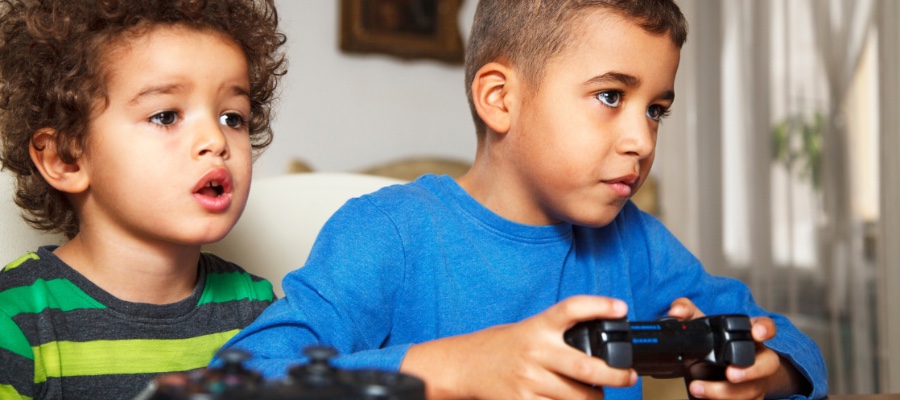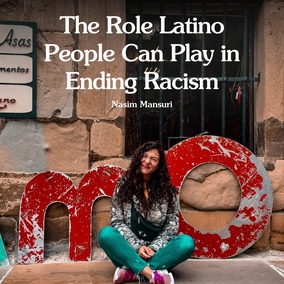The views expressed in our content reflect individual perspectives and do not represent the authoritative views of the Baha'i Faith.
A 2002 report by the United States Department of Education and the Secret Service examined 37 incidents of targeted school shootings and school attacks from 1974 to 2000 in the U.S. and found that “over half of the attackers demonstrated some interest in violence through movies, video games, books, and other media.”
Is this a coincidence? Or could exposure to violent media as a child cause violent behavior later in life? Read to learn more about the negative effects of violent video games, television shows, and movies on the brain and behavior.
The Prevalence of Violence in Video Games, Movies, and TV Shows

A “holy life, with its implications of modesty, purity, temperance, decency, and clean-mindedness, involves no less than the exercise of moderation in all that pertains to dress, language, amusements, and all artistic and literary avocations,” wrote Shoghi Effendi, the Guardian of the Baha’i Faith.
RELATED: How to Live a Holy, Pure, and Chaste Life
Unfortunately, the consumption of video games, movies, and TV shows have exceeded the bounds of moderation for most people and have become significant parts of children’s lives.
According to an article published in 2007 in the “Journal of Adolescent Health,” “Children in the United States spend an average of between 3 and 4 hours per day viewing television,” and “more than 60% of programs contain some violence, and about 40% of those contain heavy violence.”
Video game units are also present in 83% of homes with children, and “94% of games rated (by the video game industry) as appropriate for teens are described as containing violence.” Children between 8 and 10 years of age spend an average of 65 minutes per day playing video games, and 8.5% of children 8-18-years-old suffer from “gaming disorder” — the addiction to video games that is now included in the International Classification of Diseases.
Abdu’l-Baha, one of the central figures of the Baha’i Faith, said “there is danger that pastime may degenerate into waste of time. Waste of time is not acceptable in the Cause of God.” Not only does this excessive consumption of entertainment take time away from serving humanity and progressing spiritually, but it can also pervert your character and behavior.
The Short-Term Effects of Violent Video Games, Movies, and TV Shows on the Brain

Experiments have proven that “exposure to media violence immediately increases the likelihood of aggressive behavior for both children and adults in the short run.”
Whether it was preschoolers, elementary school children, teenagers, or adults that were being tested, those who watched violent clips behaved more aggressively and adopted beliefs that were more accepting of violence. This is because of the priming, increased arousal, and mimicry that takes place on a neurological level.
Psychologists Dr. Brad J Bushman and Dr. Craig A Anderson even found that playing violent video games was related to increases in aggressive thoughts, beliefs, attitudes, behaviors, and physiological arousal and decreases in “prosocial (helping) behavior.”
The Long-Term Behavioral Effects of Violent Video Games, Movies, and TV Shows

Studies have also shown that “early habitual exposure to media violence in middle-childhood predicts increased aggressiveness 1 year, 3 years, 10 years, 15 years, and 22 years later in adulthood, even controlling for early aggressiveness.”
And, children who thought the violence that they watched was realistic and identified with the aggressor who inflicted it were especially likely to adopt more aggressive beliefs and behaviors due to the observational learning that took place. For example, a 15-year follow-up with these children, who were “in the upper quartile on violence viewing in middle childhood,” found that “11% of the males had been convicted of a crime (compared with 3% for other males), 42% had “pushed, grabbed, or shoved their spouse” in the past year (compared with 22% of other males), and 69% had “shoved a person” when made angry in the past year (compared with 50% of other males). For females, 39% of the high-violence viewers had “thrown something at their spouse” in the past year (compared with 17% of the other females), and 17% had “punched, beaten, or choked” another adult when angry in the past year (compared with 4% of the other females).”
“O ye lovers of God!” Abdu’l-Baha wrote, “In this, the cycle of Almighty God, violence and force, constraint and oppression, are one and all condemned.”
If we condemn violence, shouldn’t we also condemn the games and programming that promote it? Exposure to violent video games, movies, and TV shows increases the risk of violent behavior like growing up in an environment filled with real violence does. Neuroscientists and psychologists now understand that these long-term effects are a result of the observational learning and desensitization that automatically occurs in children who witness this violence.
According to Dr. L. Rowell Huesmann, “Children automatically acquire scripts for the behaviors they observe around them in real life or in the media, along with emotional reactions and social cognitions that support those behaviors. Social comparison processes also lead children to seek out others who behave in similar aggressive manners in the media or in real life, leading to a downward spiral process that increases risk for violent behavior.”
Allowing children to watch violent media is a serious public health risk. As stated in the “Journal of Adolescent Health,” the correlation between media violence and aggression is greater than the correlation between passive smoking at work and lung cancer, exposure to lead and IQ scores in children, nicotine patches and smoking cessation, calcium intake and bone mass, homework and academic achievement, exposure to asbestos and laryngeal cancer, and self-examinations and extent of breast cancer.
Dr. L. Rowell Huesmann stated, “While the already aggressive child who watches or plays a lot of violent media may become the most aggressive young adult, the research shows that even initially unaggressive children are made more aggressive by viewing media violence.”
He added, “In summary, exposure to electronic media violence increases the risk of both children and adults behaving aggressively in the short-run and of children behaving aggressively in the long-run.”
Of course, like any public health threat, not every child who is exposed to the threat will acquire the affliction. However, this does not diminish the need to address the risk. If we want the next generation to be kind, gentle, and innocent, we can’t keep bombarding them with aggressive and perverted content. Abdu’l-Baha wrote:
Every child is potentially the light of the world—and at the same time its darkness; wherefore must the question of education be accounted as of primary importance.
From his infancy, the child must be nursed at the breast of God’s love, and nurtured in the embrace of His knowledge, that he may radiate light, grow in spirituality, be filled with wisdom and learning, and take on the characteristics of the angelic host.
Children are born pure — and helpless. They need the guidance and protection of their family and community. Let’s all strive to prevent these pure lights in our midst from being extinguished from the darkness around them.
















Comments
Sign in or create an account
Continue with Googleor